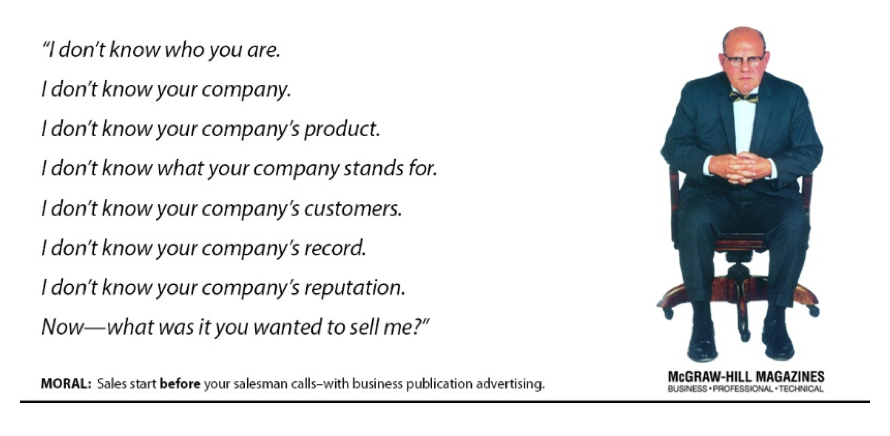Better ways to work with your agency copywriter
When working on a new ad, your agency copywriter is not just coming up with a (hopefully) clever headline and a few lines of descriptive text. In most cases, he or she is bringing together a host of different elements. Not all of them will be immediately apparent but they are all important.
Think about making a sales call. Anybody can walk into a customer or prospects office and say something like “I’m from the Acme Widget Company and our widgets have loads of great features. You should buy them.” If that was all it took, everyone would be great at selling. But that’s not the way it works. A good salesperson is going to figure out what kind of person he or she is talking too, what kind of widget is right for their application, recognize what the competition might be pitching, how to clearly differentiate Acme widgets from others, consider how urgent the need is, what the budget will handle and much more. Then, a good salesperson will tailor their approach accordingly.
Obviously, copy for an ad is not going to be customized to a particular customer the way a sales presentation would be, but it needs to be just a nuanced. In the limited space available, it needs to get the reader’s attention and make an impression about your company or product. The words that make that happen may not be the words you would use if you were talking directly to the customer. In that situation, you have a lot of other things going for you, not least of which is the fact that they have already decided to give you their attention.
A good copywriter has years of experience finding the right words and creating phrases that are easy to read, informative and persuasive. They probably spent a few hours working on just a few short sentences that you can read in 15 seconds. So, don’t be too quick in sending back changes after a first read. Instead, discuss your thoughts with the writer and, by all means, tell them why you think the copy needs to be changed. Given more information and the benefit of your experience and specialized knowledge, he/she may able to suggest alternate wording that is better than what either of you came up with on your own. And he/she will have learned something about you, your company and your products that will help them do an even better job the next time.
Here’s one more thought on having a more productive relationship with the people writing your ads. Word-processing software and email make it really easy to make quick changes and transmit them to someone else without ever really talking about the issues involved. How often have you had an email exchange in which you and another person (this is not only about ad copy) have passed a document back and forth, repeatedly making changes and adding short, often ambiguous notes in your emails? What might have been resolved in a 5- or 10-minute telephone conversation ends up taking half a day or more of constant interruptions and misunderstandings. Especially when you are paying someone to help you get your message across to a key audience, do yourself a favor and take the collaborative approach. It will certainly achieve better results and probably save you time and money too.
Want to learn more about working with writers? Let’s talk…

